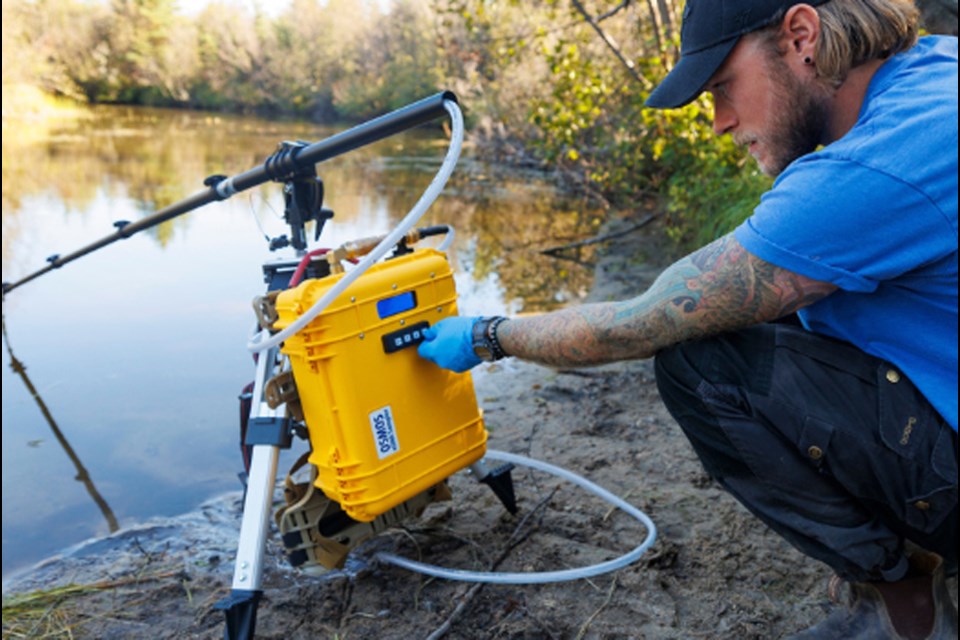CANDLE LAKE — Saskatchewan Polytechnic program students learned about cutting-edge environmental DNA (eDNA) technology during their fall camp at the .
Instructor Jim Bahr and Parks Canada ecologist Tom Perry gave students a demonstration of two different eDNA sampling machines. “The opportunity for students to learn about different machines proved to be useful in learning new methods,” Bahr shares. The technology has been introduced to offer students an opportunity to familiarize themselves with equipment used in the field for wildlife and aquatic surveys. Terrestrial and aquatic species that use water systems leave eDNA behind. Labs analyze the eDNA to identify the species that use the waterway.
“The use of eDNA is 小蓝视频 adopted in research and resource management. You need well-trained people and a place to send samples for analysis. Since the use of eDNA is becoming more prevalent, now is a beneficial time to train students on the equipment,” Bahr says.
IRM students gain hands-on learning at the Hannin Creek Education and Applied Research Centre through fall and winter camps. The eDNA sampler demo showcased how the equipment works. Removable filters capture eDNA as the sampler extracts water from a pond, lake or stream. Samples are sent to labs capable of analyzing DNA to identify species, such as the Saskatchewan Research Council. The technology’s usefulness has gained recognition in research and with resource agencies over the last decade, notes Bahr.
“The eDNA equipment has gone from 小蓝视频 a new technology to one readily used in resource management. Now, for example, ecologists with the Prince Albert National Park and resource managers in Manitoba use the equipment to monitor aquatic invasive species,” he says. As the research evolves, so does the machine’s use.
“Monitoring is a primary application, but detecting rare species, such as northern leopard frogs, is another key use. The eDNA technology provides another way to detect rare species. This technology will also be a helpful tool for applied research.”
Sask Polytech’s incorporation of eDNA equipment into field training is important, Bahr notes. He and aquatics instructor Becca Perry are currently developing ways to further integrate eDNA technology training into the IRM program.
“In the future, I will have a full in-class lecture on eDNA technology, its history and current applications in wildlife research. This will include the benefits and potential shortcomings of its use for wildlife and aquatic surveys," he shares.
“It helps detect where zebra mussels are so management measures can be undertaken to prevent the invasive species from taking hold. You need to catch them early before they become established,” Bahr says.
Knowledge students gain during their studies provides them with the technical know-how required when working in the field.
“The use of eDNA technology continues to evolve, so it’s important for our students to learn how the machine works. Lessons on eDNA will become a standard activity at fall camp so students understand how strict the protocols are for gathering eDNA samples,” Bahr explains.
Learn more about Sask Polytech’s two-year diploma program and the .
— Submitted by Sask Polytech Media Relations




